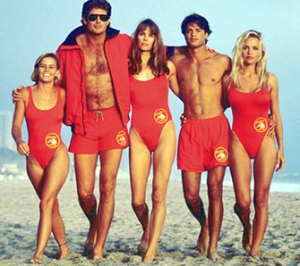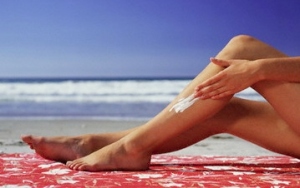I’m sure you’ve heard that too much exposure to sunlight can cause skin cancer. It’s true! The sun emits ultraviolet or “UV” rays which can penetrate your skin and damage skin cells. They are like invisible laser beams that zap into your skin and do some real damage. The damage you’re likely most familiar with is sun burn. But there are bigger problems that can come from sun damage, such as cancer. That sounds scary, and it is, but the good news is that there are steps you can take to minimize your risk. The best thing you can do is use sunscreen, but be sure you’re using it properly! Below are a few tips and facts to help you better protect your largest organ: your skin!
Make sure you pick the RIGHT sunscreen.
Many sunscreens only protect you from the sun’s UVB rays, and not UVA rays. Both types of UV rays can cause skin cancer according to the American Cancer Society. UVB rays are mostly responsible for sun burns on the top layers of your skin, but just because you didn’t burn, doesn’t mean that UVA rays didn’t penetrate deeper and cause damage.
The ACS, CDC, and FDA all recommend that you use sunscreens that are SPF 15 or higher and have “broad spectrum” written on the label. Broad Spectrum means that it protects against both UVB and UVA rays.
SPF 30 isn’t “twice the protection” as SPF 15. The Sun Protection Factor (SPF) of your sunscreen is the fraction of rays that reach your skin, so SPF 15 means only 1/15 of UVB rays will reach the skin. SPF 30 can filter out 97 percent of UVB rays, whereas SPF 50 filters out 98 percent. There’s no evidence supporting that SPF values higher than 50 provide any additional protection.
There’s no such thing as “waterproof” sunscreen. Recent FDA regulations prevent companies from claiming sunscreen is “waterproof” anymore. Products can still claim to be “water resistant” for either 40 or 80 minutes of swimming or sweating. However, it is still recommending that you reapply sunscreen after getting wet.
You DO need sunscreen on a cloudy day! And more than just a little dab.
Even if it’s cold or cloudy outside, you still need to wear sunscreen. Up to 40 percent of the sun’s UV rays reach the earth on a completely cloudy day. That’s more than enough to cause skin damage. According to studies, most people apply only 1/4 of the needed amount of sunscreen. We should be using one ounce of sunscreen to cover our arms, legs, neck and face. More if your back/stomach is exposed! One ounce is about a shot glass worth to put it in perspective. Also note that sunscreen can and does wear off, so you need to reapply the same amount every two hours or after swimming or a work out that makes you sweat. Don’t skimp!
Applying sunscreen while you’re outside is already too late.
It’s tempting to save some time by grabbing the sunscreen and taking it with you to the beach to put it on there, but sunscreen takes about 30 minutes to be absorbed into your skin, according to the Skin Cancer Foundation. Be sure to apply it before going outside. And having a “base tan” won’t protect you from radiation. UV rays can penetrate a tan. Your darker pigment only protects up to an equivalent of SPF 3 at most and usually that number is less. You still need to apply sunscreen.
What you wear can help.
You can help combat sun exposure by wearing clothes, hats and sunglasses that advertise UV protection. Not all glasses provide this protection, so be sure to check for it specifically. Watch your clothing, though. Loose, thin materials don’t offer total protection. A typical t-shirt offers protection of roughly SPF 15. If you’re going to spend a whole day outdoors in direct sunlight, you might want to consider putting on a layer of sunscreen even under a thin shirt!
9. Get an airbrush tan if you want some color.
Tanning beds use UV rays to give you a tan. These are the same types of harmful rays in the sun. If you want a tan, FDA-approved airbrush tanning is the way to go. It’s not a dye or stain, the organic compound DHA in airbrush tanning formulas reacts naturally with the top layer of your skin to create a tan that only affects this top layer and doesn’t damage your skin. These tans last 7-10 days and are the safest option for those who desire tan skin but don’t want to risk the permanent damage that UV radiation can cause.








